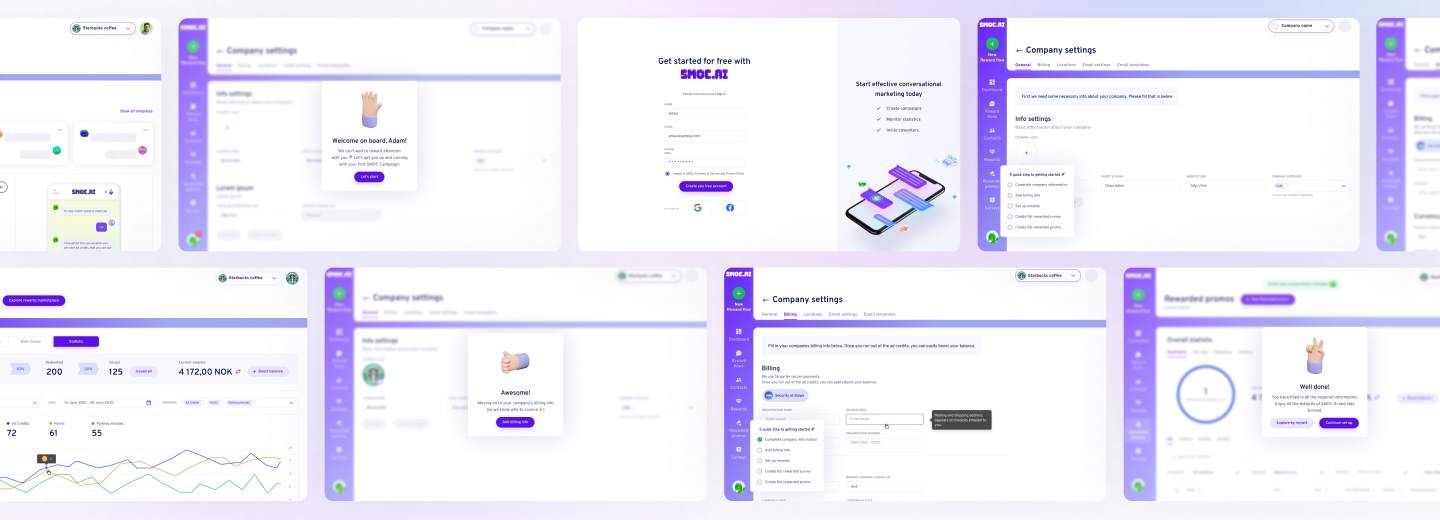2025 is a time when investors are busier, pickier, and more data-driven than ever. And for you, that means that your pitch deck is not just a formality – it’s your startup’s first impression, business card, and audition all in one. A clear, concise deck that tells a compelling story, whether you are looking for seed funding or setting up for a Series A, can make or break your chances of landing that crucial meeting.
But what exactly makes a pitch deck stand out in today’s fast-paced investment landscape? Founders often get lost in design flourishes or make slides overloaded with data, when the objective is just simple: tell a story that conveys your vision and see that you are the team that will make it real.
This article breaks down the 10 most important slides every winning pitch deck has to include, ranging from perfecting your problem statement to creating a killer go-to-market strategy. Let’s dive in.
what’s in the article
- What is a pitch deck?
- Slides That Make a Strong Pitch Deck
- Make Your Pitch Deck Work
- Real Examples of Winning Pitch Decks
- Conclusion
What is a Pitch Deck?
A pitch deck is a visual presentation that startups use to present the most critical information about their business to potential investors, partners, or stakeholders. Think of it as your company’s highlight reel – a concise, yet compelling summary that conveys your story, demonstrates your traction, and tells people why your idea matters. Creating a pitch deck not only provides facts but also reasons to trust the facts. It creates confidence, suggests momentum, and opens doors to funding discussions. In 2025, more startups will be fighting over limited capital, it is more important than ever to create a deck that is clear and compelling.
Standard vs. Modern Pitch Deck Formats
In the past, pitch decks followed a rather predictable structure. problem, solution, market, team, and financials. Although that old-fashioned style has its time and place, the pitch decks of 2025 have adapted to changing investor demands and the rapidly changing digital world. The winning decks today are more visually appealing and data-supported and are customizable to the audience – it could be a venture capitalist, an angel investor, or even a crowdfunding platform.
Modern decks also put more emphasis on storytelling, clarity and brevity. Some have business model slides for sustainability, AI integration, or customer acquisition costs upfront, depending on the trends in the industry. The key difference? Traditional decks provide information, while modern decks convince. And in the noisy startup environment, persuasion is all.

Looking to Build an MVP without worries about strategy planning?
EVNE Developers is a dedicated software development team with a product mindset.
We’ll be happy to help you turn your idea into life and successfully monetize it.
Slides That Make a Strong Pitch Deck
Coming up with a pitch deck is not a matter of collecting a couple of pretty slides; it’s about writing a story that convinces investors your startup is a good bet. Each pitch slide should have a purpose, eliminate doubts, and create trust. What slides should be in a pitch deck? There are the 10 slides pitch deck that make the spine of a strong, investor-ready pitch deck in 2025.
Pitch Deck Title Slide
Your title slide is the first impression you create – make it count. Add your company name, logo, tagline (if you have one), as well as the contact information. A strong visual or tagline that suggests the key value of the startup could make your deck instantly memorable. Make pitch deck title slide streamlined, clean, and branded.
Problem Slide
This is where you grab attention. Set a clear description of the problem that your startup is solving in the real world. Make it relevant, urgent, and important. Use data, a short story, or a quote from a client to explain the pain point and make the weight of the pain point felt to investors.
Solution Slide
Now that the problem is known, put forward your solution. Describe how your product/service is uniquely able to respond to the issue. Pay attention to simplicity, differentiation, and the particular benefits that your solution provides. Bonus points if you share visuals, a short demo, or screenshots.
Market Opportunity Slide
The investors want to be sure that the market is big enough to matter. Demonstrate your total addressable market (TAM), serviceable market (SAM), and your first target segment. Use reliable data sources and sell your point on why the present is the best time to come into this space.
Business Model Slide
This is where you tell them how you earn the money. Arrange your pricing strategy, revenue streams, and all monetization insights you have gained. Whether it is subscriptions, licensing, or MFs, make it easy to understand how your business makes money and scales.
Traction Slide
Traction builds credibility. Showcase critical metrics that support the fact that your startup is heading in the right direction – users, revenue, growth rate, retention, partnerships, or waitlist numbers. Make the progress visual using charts or graphs. Early traction indicates Momentum and validation.
Go-to-Market Slide
Your great product won’t sell itself. This pitch slide refers to your customer acquisition strategy. Describe your channels (SEO, paid ads, partnerships, outbound sales, etc.), estimated costs, and first results. Specify how you are going to grow efficiently and predictably.
Competition Slide
Every investor knows that there is competition – pretending otherwise hurts credibility. Instead, demonstrate the way you measure up to existing players. Use a matrix, quadrant, or chart to emphasise your unique value proposition. Focus on why your solution is better, faster, cheaper, or more scalable.
Team Slide
People are very often bet on by investors as compared to products. Provide a team introduction of your core team and advisors, and mention relevant experience, industry expertise, and past wins. Make it clear why this is the team that will realize the vision and that will defeat the inevitable trials.
Investors often bet on people more than products. Introduce your core team and advisors, and highlight relevant experience, industry expertise, and past wins. Make it clear why this is the team that can execute the vision and overcome the inevitable challenges.
Pitch Deck Financial Slide
Sum it up, with a top-level view of your finances: projections, revenue targets, burn rate, and runway. The pitch deck financial slide should be a compromise – detailed enough to prove you’ve done your homework, but not cluttered. Provide details of what you are raising, how you will spend the money, and the ROI.

Proving the Concept for FinTech Startup with a Smart Algorithm for Detecting Subscriptions

Scaling from Prototype into a User-Friendly and Conversational Marketing Platform
Make Your Pitch Deck Work
Even the best idea ever for a startup can get lost in a disorganized, difficult-to-read pitch presentation. Design matters — not because it should be flashy, but rather it should serve your message, not detract from your message. A pitch slide deck that is well designed is straightforward, professional, and accessible on any device. This is how to make your deck great, rather than good, but pitch-perfect.
Use a Consistent Slide Size
Consistency in slide dimensions ensures your pitch deck looks neat and professional. Whether you are face-to-face presenting or sharing a PDF via email, a universal widescreen format of 16:9 helps your deck display cleanly on all screens. Irregular sizes or strange aspect ratios can derail alignment, crop visuals, or create distraction, subtle details that can subtly discredit you.
Readable Fonts & Sizes
Fancy fonts may look great, but if the investors can’t read them at a glance, they are not on your side. It is better to stick to clean, professional typefaces such as Helvetica, Open Sans, or Roboto. Use a clear hierarchy with font sizes – large for titles, medium for the main points, and smaller (but still readable) for the supporting text. Think of it this way: if someone looked at your deck from a distance of a room, would they be able to get the gist?
Visual Minimalism
Less is more. Avoid pitch deck slides that are cluttered with walls of text and too many design elements. Create whitespace for effective eye guiding and highlighting of key points. Just because you have a minimalist approach does not mean you have to be boring – it means that you are focused. Each slide must present a single central idea, with an image, such as a graph, icon, or picture, that illustrates it but does not drown it.
File Size
You do not want your pitch deck ending up in the spam folder of an individual or crashing on a mobile device. Make your file size lean — a rule of thumb is under 10 MB. Optimize images, do not use unnecessary animations, and export in PDF format unless otherwise requested. A quick-loading, simple-to-share deck means your pitch will get seen — the first step towards being funded.
Real Examples of Winning Pitch Decks
Airbnb (2009 Seed Round)
Amount Raised: $600K
Why it worked:
- Simplicity: The deck used very clear and concise pitch deck slides to outline the problem and its distinct solution.
- Traction Focus: They had real-world validation in terms of user growth and early revenue.
- Clear Business Model: Airbnb was explicit on how they would make money on each booking.
Lesson: An initial traction, even if little, can be an indicator that your idea has practical value.
Uber (UberCab, 2008)
Amount Raised: $200K (initial)
Why it worked:
- Bold Vision: They portrayed a picture of a global shift in transport.
- Market Disruption: Uber demonstrated how their model could overturn the old taxi system.
- Tech & Convenience: Made a point of the innovation of “push a button, get a ride”.
Lesson: Demonstrate how your startup doesn’t play the game but changes it.
Dropbox (2007)
Amount Raised: Y Combinator Seed
Why it worked:
- Visual Storytelling: They used a demo video to describe the product simply.
- Big Problem: Highlighted the pain of syncing files between devices before the advent of cloud storage.
- Elegant Solution: Focused on the fact that Dropbox “just worked” – no set up, no confusion.
Lesson: If your product is complicated, visuals or demos could tell the story better than text.
Buffer (2011)
Amount Raised: $500K
Why it worked:
- Transparency: Buffer publicly posted their pitch deck on the internet – with real numbers.
- Early Traction: Demonstrated paying customers and rates of growth before fundraising.
- Lean Operation: Explained how they were able to grow successfully with little resources.
Lesson: Authenticity and openness can help to make your pitch more real and trustworthy.
Revolut (2015)
Amount Raised: £1M Seed
Why it worked:
- Strong Design: A sleek, modern design captured the user experience of their product.
- Clear Market Need: Framed the high costs of currency exchange as a solvable problem.
- Ambitious Vision: Put themselves not only as a card but as a global financial platform.
Lesson: Make your deck a representation of your product’s values — clean, user-first, and future-oriented.

Need Checking What Your Product Market is Able to Offer?
EVNE Developers is a dedicated software development team with a product mindset.
We’ll be happy to help you turn your idea into life and successfully monetize it.
Conclusion
Making a winning pitch deck in 2025 is no longer a matter of checking boxes but a matter of telling a story that sticks, with data that persuades. Each of your work slides in your deck should have a specific purpose.
From an exciting title slide to a compelling financial overview, every one of the 10 key slides are opportunities to get investors closer to one word: yes. Strive to be clear rather than complicated, tell stories instead of talking in jargon, and build traction rather than making speculations.
Keep in mind that investing isn’t just a thing of ideas — investors are investing in teams, timing, and execution. Therefore, use a pitch deck not only to demonstrate what you are building but why you are the one building it.
If you have a vision and need some professional help to make it come to life – from business pitch deck design to MVP creation – EVNE Developers are on hand to help. Our team is expert in taking startups through each stage of product development and fundraising journey to make sure your pitch not only looks professional but also succeeds.
The Traction Slide — it is evidence that your idea is working and lowers investor risk.
15 and above is usually too much. Shoot for 10-12 focused slides that have a clear story to tell.
It’s investor-ready if it’s clear, concise, data-backed, and it answers essential questions about your problem, solution, market, and team, as well as growth, in 3-5 minutes of reading.

About author
Roman Bondarenko is the CEO of EVNE Developers. He is an expert in software development and technological entrepreneurship and has 10+years of experience in digital transformation consulting in Healthcare, FinTech, Supply Chain and Logistics.
Author | CEO EVNE Developers


















